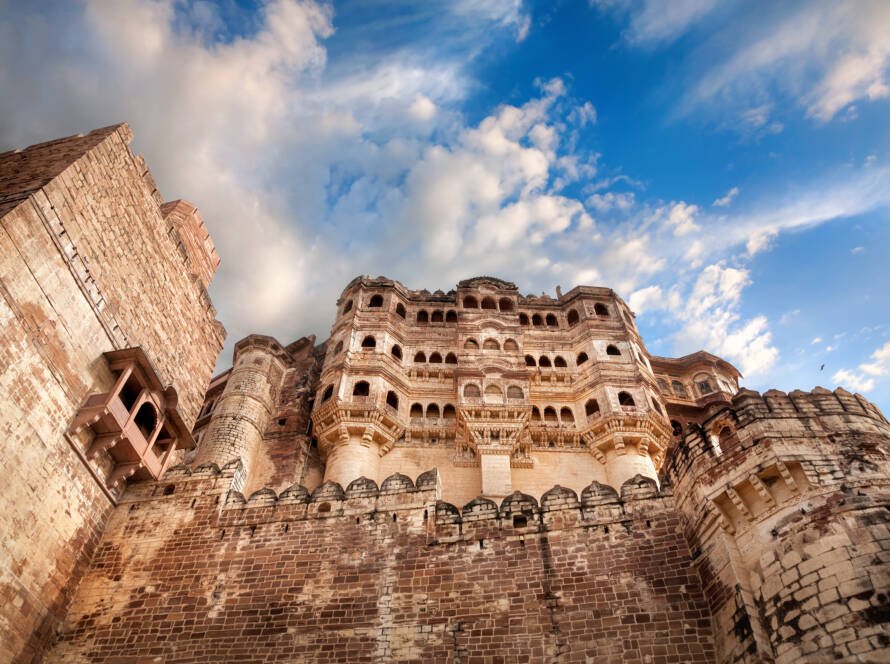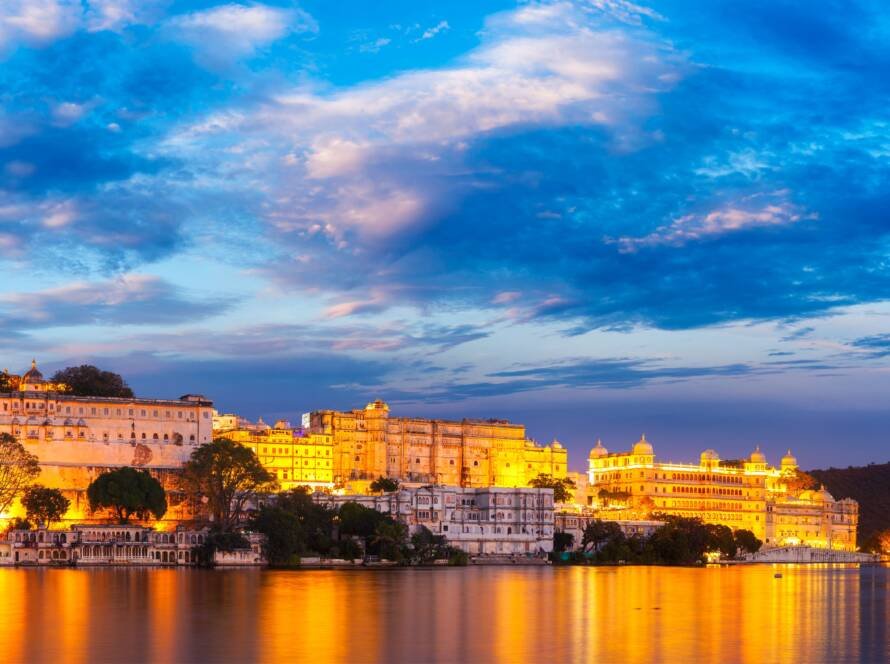Ancient India is a land steeped in history, culture, and architectural brilliance, with Rajasthan, the “Land of Kings,” standing as a testament to this legacy. This vibrant region, known for its majestic palaces, offers a glimpse into the opulent lifestyles and grand ambitions of the Rajput rulers who once reigned over this desert kingdom. From the towering forts that rise above the arid landscape to the intricately adorned palaces nestled within their walls, Rajasthan’s architectural marvels continue to captivate the imagination of all who visit.
Rajasthan’s palaces are a blend of architectural styles, reflecting the influences of Rajput aesthetics. One of the most iconic of these is the Mehrangarh Fort in Jodhpur. Perched 400 feet above the city, this imposing fort is a symbol of the indomitable spirit of the Rajputs. Within its massive walls lies a series of palaces that tell stories of valor, power, and luxury. The Phool Mahal (Flower Palace) and Moti Mahal (Pearl Palace) within the fort are adorned with delicate filigree work, frescoes, and stained glass, showcasing the artistic excellence of the time. The fort also houses a museum that offers a fascinating collection of artifacts, including royal palanquins, armory, and paintings, providing a window into the royal lifestyle.
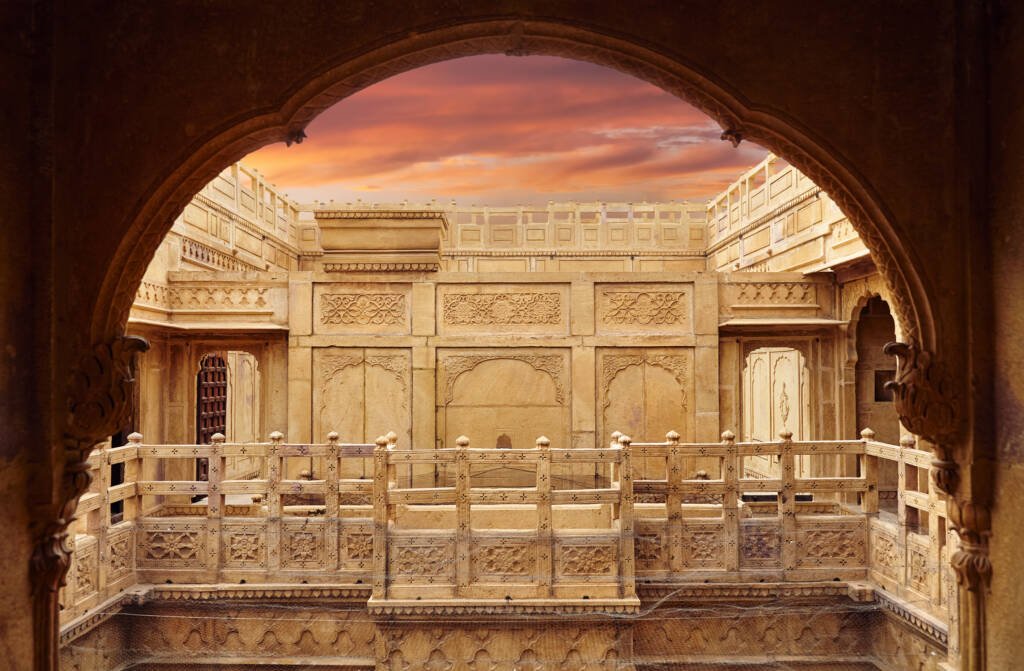
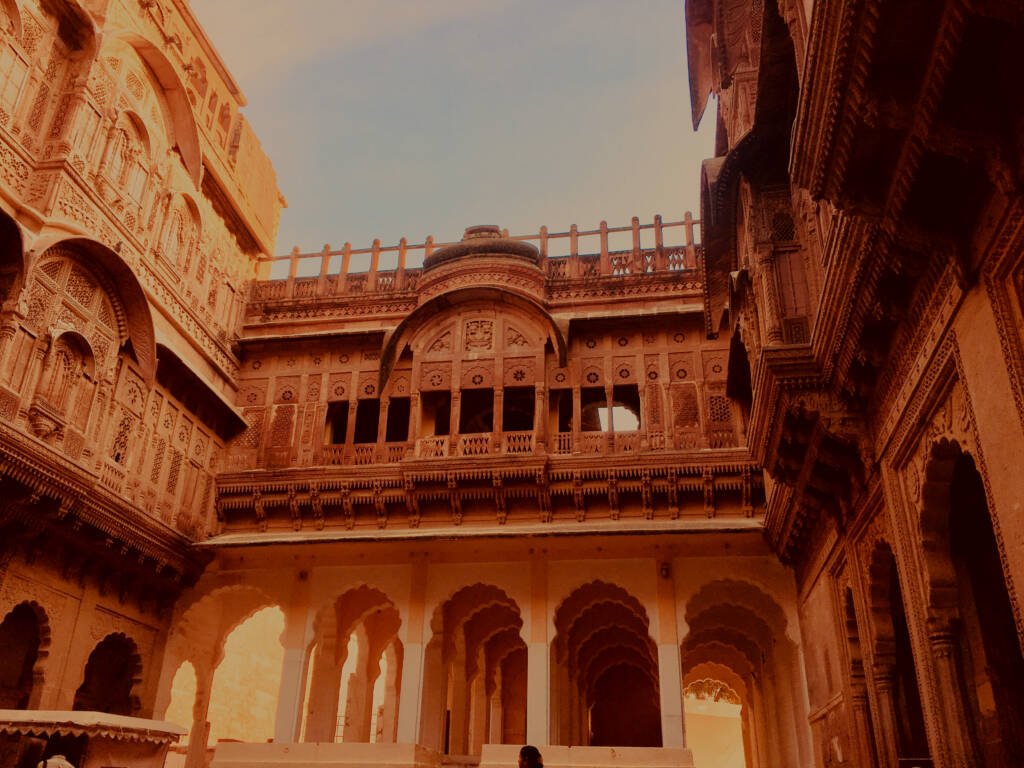
The City Palace in Udaipur, overlooking the serene waters of Lake Pichola, is another gem in Rajasthan’s crown. This sprawling palace complex, built over several centuries, reflects a harmonious blend of Rajput and Mughal architecture. The palace’s grandeur is evident in its ornate balconies, towering cupolas, and intricately carved windows. The interiors are equally mesmerizing, with rooms like the Mor Chowk (Peacock Courtyard) featuring stunning mosaics of peacocks, the favorite symbol of royalty. The City Palace is not just a relic of the past; it remains the residence of the Mewar royal family and a vibrant center of culture and heritage, with parts of it converted into museums and hotels that allow visitors to experience the regal atmosphere firsthand.
Perhaps the most iconic of Rajasthan’s palaces is the Amber Fort in Jaipur. This majestic fort, with its imposing ramparts and grand gates, is a masterpiece of Rajput and Mughal architecture. Inside, the Sheesh Mahal (Hall of Mirrors) stands out as a symbol of the Rajput’s love for opulence. This stunning chamber, with its walls and ceilings covered in thousands of tiny mirrors, is designed to reflect light in such a way that a single candle can illuminate the entire room, creating a dazzling effect that is nothing short of magical. The fort also houses the Diwan-i-Aam (Hall of Public Audience) and the Sukh Niwas (Hall of Pleasure), each a testament to the grandeur and architectural brilliance of the Kachwaha rulers.
The Hawa Mahal (Palace of Winds) in Jaipur is another iconic structure, known for its unique five-story façade with 953 small windows or ‘jharokhas’ adorned with intricate latticework. Built in 1799 by Maharaja Sawai Pratap Singh, this palace was designed to allow the royal ladies to observe street festivals while remaining unseen from the outside, reflecting the societal norms and customs of the time.
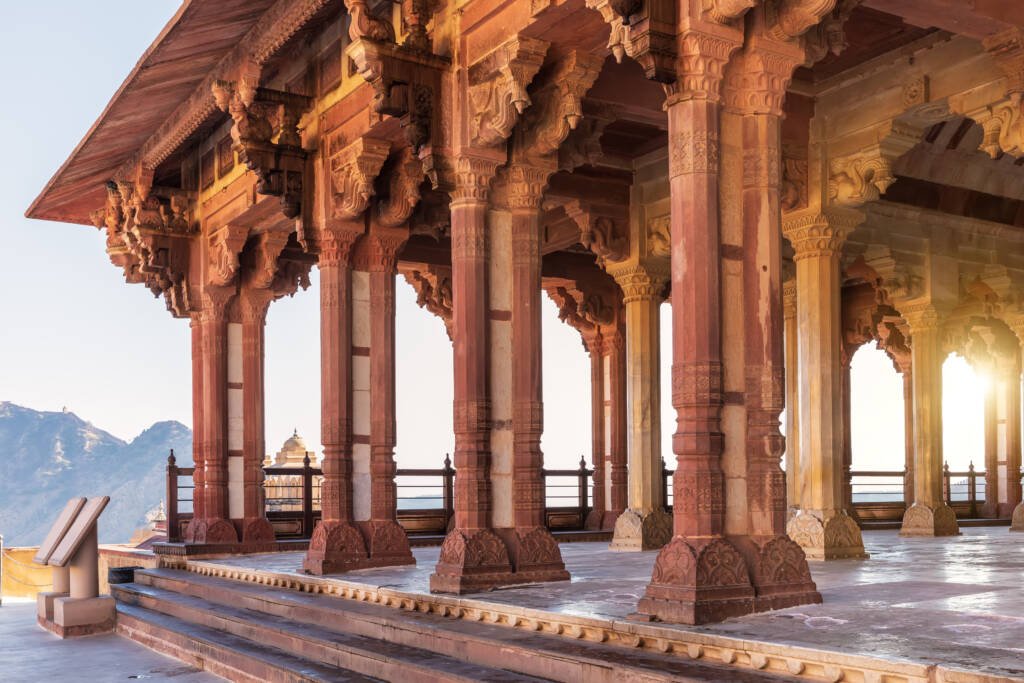
Beyond their architectural splendor, these palaces served as centers of cultural and political power. They were the seats of royal families, the venues for grand durbars (royal courts), and the settings for countless legends and stories of valor, romance, and intrigue. Staying in one of these palaces, walking through their halls, and gazing upon the same views that once inspired kings and queens is an experience that brings history to life in the most tangible way.
The majestic palaces of Rajasthan are more than just architectural wonders; they are a testament to the enduring legacy of the Rajput kings who shaped the region’s history. These palaces, with their intricate carvings, vibrant frescoes, and grandiose designs, continue to captivate the imagination, drawing visitors from around the world to witness the timeless beauty and cultural richness of Rajasthan. Each palace tells its own story, a narrative of power, beauty, and the indomitable spirit of a people who have left an indelible mark on India’s cultural heritage.

